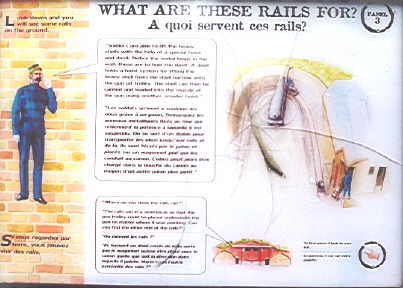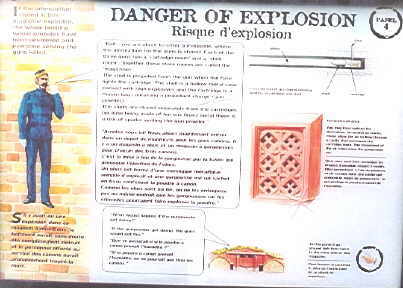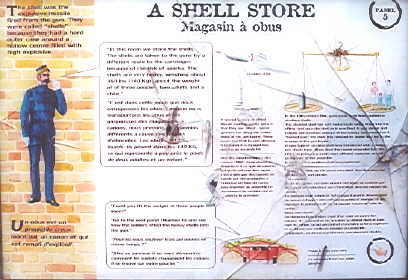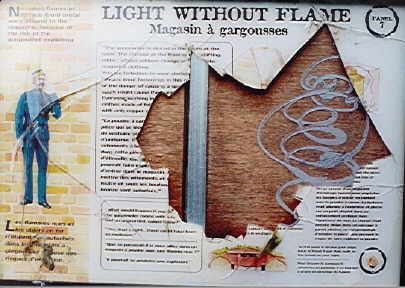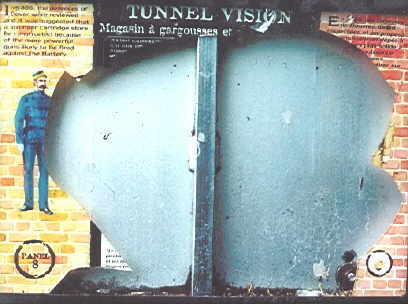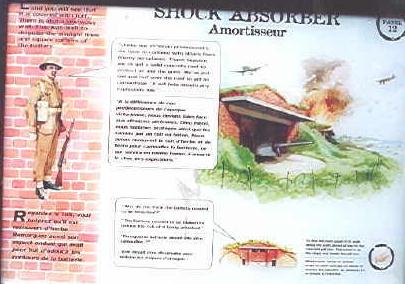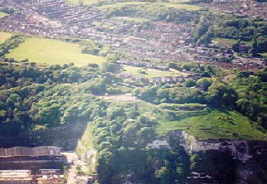
St. Martin’s Battery
Renamed in 1940 as Western Heights Battery

St. Martin's Battery atop the Cliff, May 1999
Bottom Left Shows the Position of the Royal Military Hospital, Now an Industrial estate

The battery from St. Martin's Path
St. Martin’s Battery was originally a Victorian gun battery which was modified during world war 2 to take more modern ordnance with better protection from attack. The original weapons as fitted were 10" RML’s, rifled muzzle loaders. This meant that the barrels were internally rifled thus providing a greater range and accuracy; these guns were also loaded from the muzzle end of the barrel by the use of lifting equipment. There were three 10" RML’s fitted at this battery.

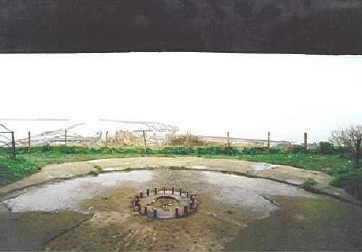
No. 2 Gun House - Taken 27.2.99
The two photo's above clearly show the two building phases :
Outer barbette (lighter coloured concrete): Victorian & inner mounting (darker coloured concrete): 1940.
Under the threat of invasion in 1940 St. Martin’s Battery was upgraded to an ‘emergency’ battery and fitted with three 6" BL guns. The old Victorian emplacements were concreted over and new gun houses built which offered overhead protection against air attack. It is possible to determine the two building phases at once; the Victorian brickwork is yellow and that of WW2, red. The 6" battery was up and running by late 1940 at which time the battery was renamed, Western Heights Battery.
It is possible to see a 6" gun of this era in an open barbette at Newhaven Fort in West Sussex.
Western Heights Battery
The WW2 battery was manned by the 414 Coast Battery, Royal Artillery and this was when the battery was renamed 'Western Heights Battery'. When completed the Battery staff complement was some 143 men, presumably living in the Grand Shaft Barracks nearby. This seemingly large amount of men included 4 officers who had 4 batmen and there were also gun artificers, 6 gunners, 6 range takers, 3 telephonists, 4 cooks, a gun detachment of 78, 3 sergeants, a clerk, a storeman, 2 mess servants and others. This staff numbered 123.
The remaining 20 men were assigned to the CASL, or Coast Artillery Search Lights, and included a Battery Sergeant Major, an electrical fitter, a motor vehicle fitter, 4 men to man the searchlights, a storeman, 2 telephonists, 3 engine room personnel, an NCO and 4 switchmen.
Deep Shelter
In 1890 a magazine was built to the rear of the battery by cutting into the earth bank. In 1940 this was taken to a depth of around 30’ to provide a secure shelter for the WW2 gun operators.
The deep shelter was built to give protection to the crews that worked the guns and was an extension to a Victorian magazine. The shelter goes some 30 feet down into the hillside by means of a steep staircase and then branches out into three corridors two of which appear to be accommodation areas and could sleep 8 men each. Further along there are brackets where 7 wash basins were fixed, although there do not appear to be any latrines !
Further along is a substantial rock fall, the passage behind this leading to the emergency exit at Grand Shaft Barracks, which is also blocked.
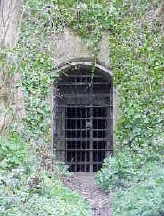
The gated entrance to the deep shelter
Access to the shaft is now impossible due to a steel grate having been fixed in its entrance. For many years all the magazines were open and thorough investigation was possible (if not highly dangerous), but again, thanks to the vandals all accesses have been closed off.
Vandalism
For many years St. Martin’s Battery had been badly vandalised just like the rest of the Heights, with fires being lit in the gun houses and the deep shelter behind. The shelter had apparently also been the home to other unsocial activities.
In 1993 it was proposed by Dover District Council, who incidentally owns the site, that the area be turned into a Western Heights Discovery Centre using EEC funding via the European Regional Development Fund. In July 1993 the Dover Express and East Kent Mercury reported that in excess of £70,000 was to be spent on the Heights with £15000 being spent on St. Martin’s Battery by ‘improving and installing one or more guns’ and another £15000 by creating ‘A Soldier’s Life’ heritage trail centered around the Grand Shaft.
New Wayside Boards
In 1998 a ‘Gun Battery’ trail was created around the battery by Dover District Council. This trail incorporates 13 new sign boards in full colour describing life around the Victorian and WW2 batteries. It was thought that by creating correct interpretation of the area it would give some meaning to the various buildings and structures and cancel out the vandalism. This is a major step in prolonging the useful life of St. Martin’s Battery although the new sign boards are regularly themselves vandalised and it seems to be some time before they are replaced. There is evidence of the local ‘wasters’ using them as targets for brick throwing and air rifle practice. Consequently we are still waiting for the ‘one or more guns’.
The new signs are incidentally, in English and French and the technical details of the battery were contributed by Dover Museum and the Kent Defence Research Group.
You will find photographs of the new wayside panels below and hopefully you will be as impressed with them as we are.

